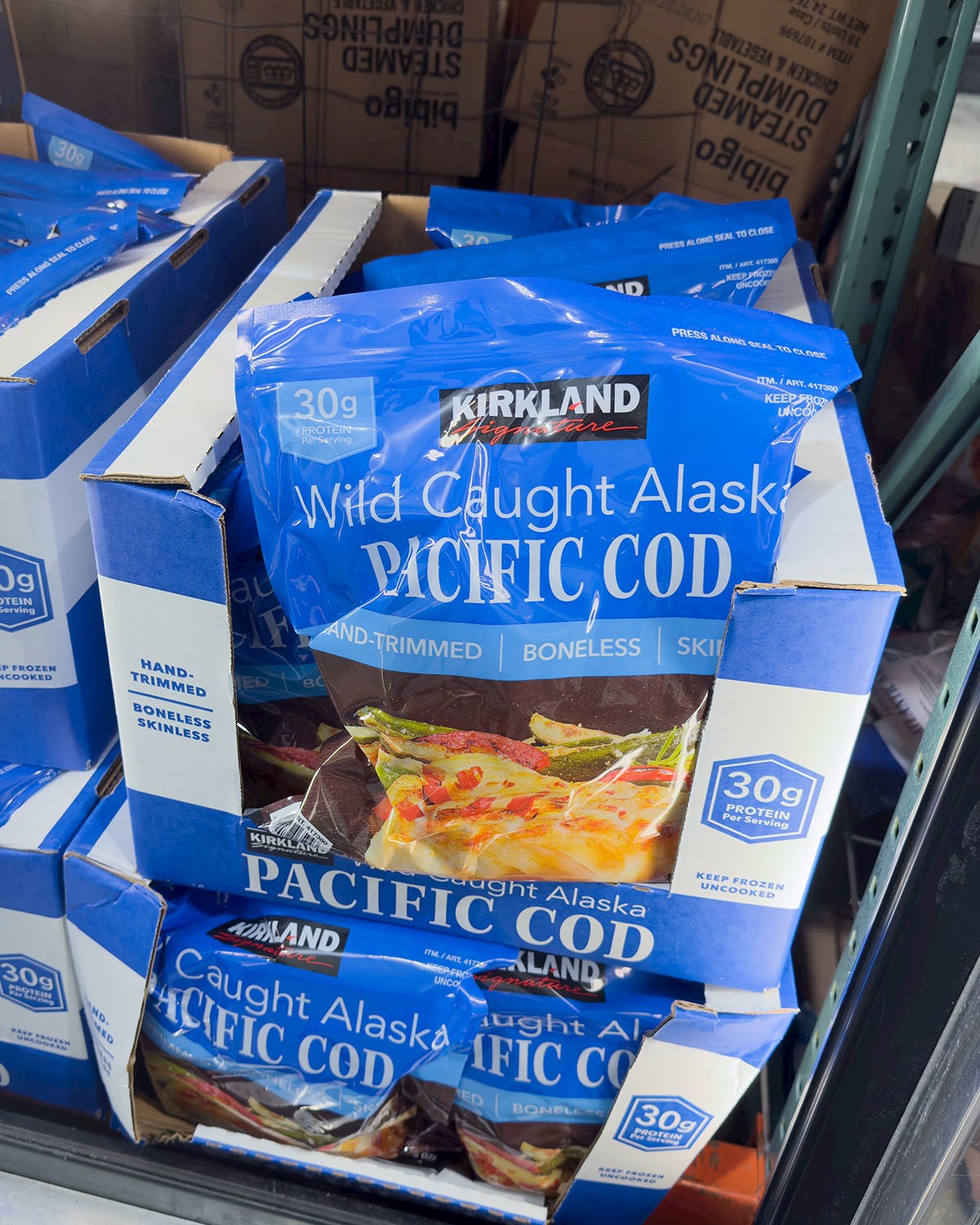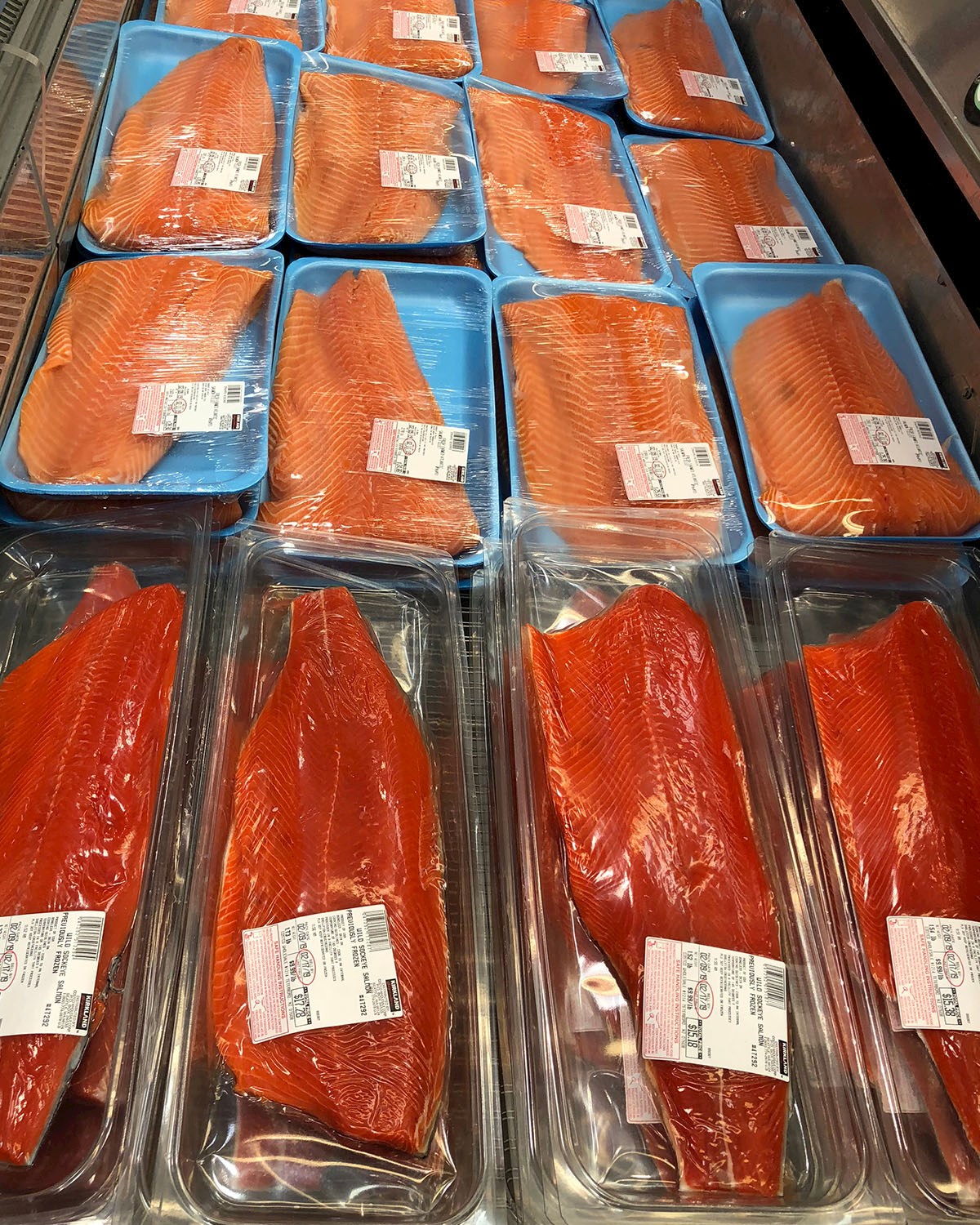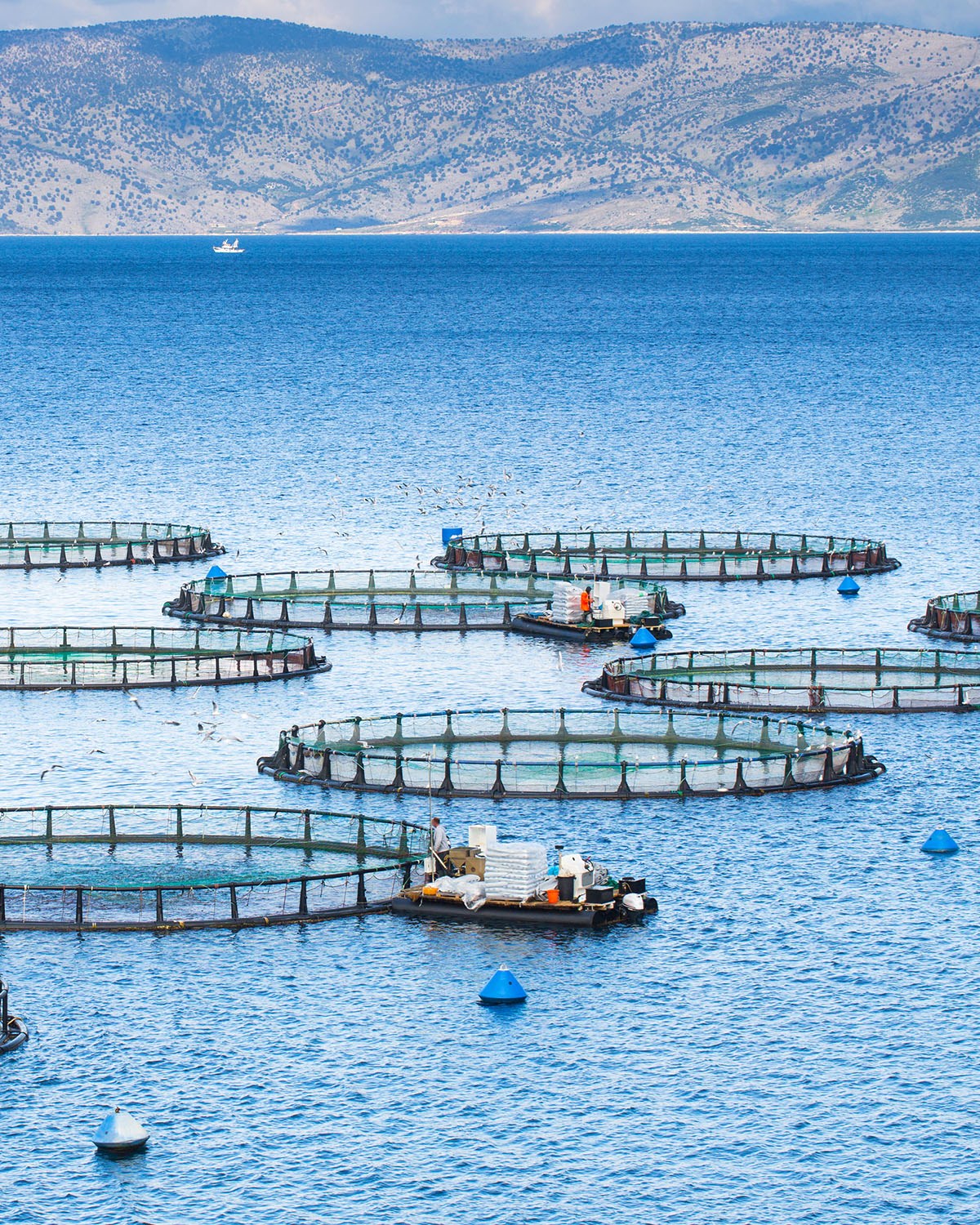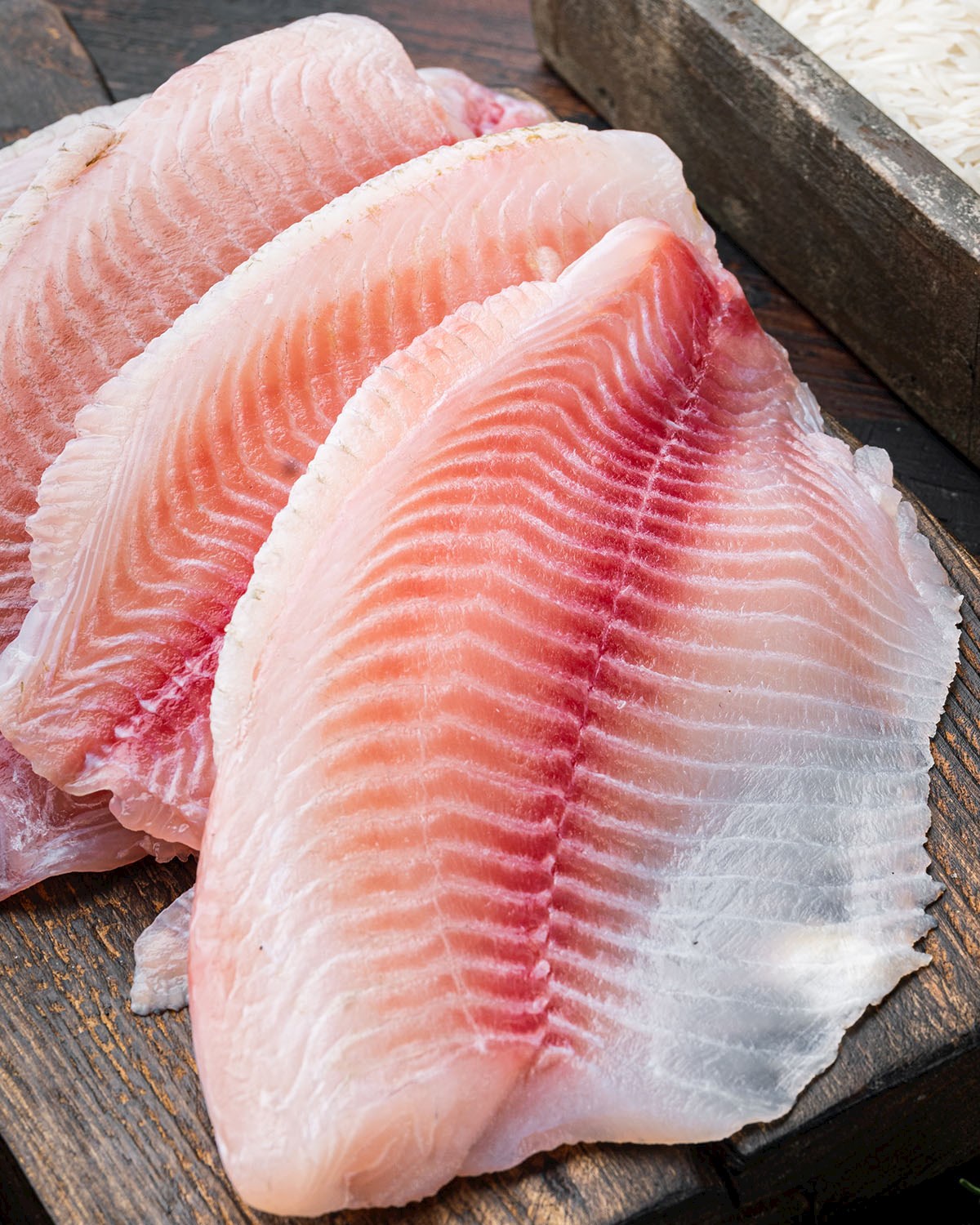The debate over whether wild or farmed fish is the superior choice often hinges on individual perspectives, as both options have their dedicated proponents. Enthusiasts on either side tout various benefits, such as the rich, diverse nutritional profiles and natural lifestyles of wild fish, versus the consistent, year-round availability and controlled environments of farmed varieties.
But for the consumer standing in front of a seafood counter, the distinctions between wild and farmed might seem elusive. So here are some pointers. Well, a lot of pointers.
Spot the Difference: A Buyer’s Guide

Labeling
A straightforward method, always check the label. Reputable sellers will indicate the origin. However, it's most likely farmed if it doesn't say specifically wild.
 Credits: Shutterstock
Credits: Shutterstock
Color
The color of fish flesh often serves as a visual indicator of its origin, with wild fish generally displaying deeper, more vibrant shades due to their varied natural diets. In contrast, farmed fish, given a controlled feed, can have a lighter or even consistent color.
 Credits: Shutterstock
Credits: Shutterstock
Texture
The texture of fish flesh can vary notably between wild and farmed varieties. Wild fish, actively swimming and navigating vast oceanic or freshwater expanses, tend to develop firmer, denser muscles, leading to a meatier texture when cooked. In contrast, farmed fish, living in more confined spaces and often leading a less active lifestyle, can have a softer, more delicate texture due to less muscle development and fat distribution.
 Credits: Shutterstock
Credits: Shutterstock
Size and Shape
Wild fish often vary in size and shape due to the natural selection processes in their expansive habitats, leading to diverse genetic makeups and physical characteristics. Many wild species tend to have a flatter profile, streamlined for long-distance swimming and evading predators. In contrast, farmed fish are usually bred for uniformity and optimal yield, often resulting in rounder or more rotund bodies due to controlled diets and limited space, in addition to the consistent sizes and shapes typical of aquaculture practices.
Appearance
Due to their confinement in densely populated enclosures, farmed fish frequently suffer from physical damages like torn fins, scratched scales, and clouded, injured eyes resulting from close encounters with other fish and the boundaries of their enclosures. This can sometimes impact their overall growth, as energy that could be used for growth is diverted to healing.
Wild fish, swimming freely in expansive natural habitats, face fewer physical abrasions and often exhibit pristine scales, intact fins, and clear eyes. Consequently, their energy is more consistently channeled into growth, potentially leading to larger sizes than their farmed counterparts.
 Credits: Shutterstock
Credits: Shutterstock
Farmed fish often develop an upward-facing mouth as a result of being fed from above, adapting their physiology to an environment where food comes from the surface. In contrast, wild fish typically feature a more forward-facing mouth, reflecting their need to forage or hunt for food in various directions within their natural habitats.
Moreover, wild fish often display more vibrant and diverse colors on their skin, a reflection of the rich and varied diet available in the wild. In contrast, farmed fish may exhibit duller colors due to a more uniform diet and different living conditions.
Cost
The cost of fish can vary greatly based on whether it's wild-caught or farmed, with several factors influencing the price. Typically, farmed fish tend to be more affordable, as aquaculture can produce large quantities in a controlled environment, optimizing for feed and growth rates. Wild fish, on the other hand, often carry a premium price due to the unpredictable nature of fishing yields, tighter regulations, and the expansive operations required for sourcing from open waters. Moreover, certain species of wild fish are sought after for their distinct taste or texture, further driving up their market value.
As a result, consumers frequently find farmed fish as a more budget-friendly option, while wild-caught fish might be viewed as a luxury or specialty purchase.
Taste the Difference: An Eater’s Guide
Flavor
Wild fish typically exhibit a more pronounced and distinct flavor, reflecting the diverse, natural diets they consume in open waters. This can result in a taste that's described as "briny", "mineral-rich", or even "gamey" in certain species.
Conversely, farmed fish tend to have a milder and more consistent flavor, largely influenced by controlled feeds. As such, farmed varieties might be characterized as "buttery", "less fishy", or "fattier", particularly in species like salmon that are cultivated for higher fat content.
Nutritional Value
The nutritional profiles of wild and farmed fish exhibit marked distinctions. Wild fish, nourished by a natural diet in open waters, tend to possess higher protein content, fewer fats, and a richer spectrum of vitamins and minerals. While both wild and farmed fish offer valuable omega-3 fatty acids, farmed varieties often contain higher levels of omega-6, which can be more inflammatory, potentially offsetting the benefits of omega-3.
Furthermore, because farmed fish have a higher fat content, they are more caloric than wild fish. Also, due to farming practices, farmed fish may have elevated levels of antibiotics and dioxins, raising concerns about their health implications. But when it comes to mercury, fish raised in the ocean will have the same amounts as those that are roaming free since they both inhabit the same habitat.
Cooking with Wild vs. Farmed Fish
Farmed fish generally has a higher fat content compared to wild fish, allowing it to endure higher cooking temperatures without becoming stiff or dry. This increased fat also gives farmed fish a flakier texture, which can make it more succulent and desirable in certain dishes.
 Credits: Shutterstock
Credits: Shutterstock
However, this flakiness also means that farmed fish can be more delicate, requiring gentle handling during preparation and cooking to maintain its integrity. In contrast, wild fish, being leaner, might not withstand high heat as well and can become tough if overcooked.
Which fish is farmed the most?
Salmon tops the list, renowned for its omega-3 content and consumer appeal. Tilapia, adaptable to diverse farming conditions and having a mild taste, is another majorly cultivated species. Catfish, popular in the United States, stands out for its rapid growth and feed efficiency.
 Credits: Shutterstock
Credits: Shutterstock
Bream, including species like gilthead sea bream, is frequently farmed in the Mediterranean region. Lastly, branzino (European seabass) has gained prominence in European aquaculture due to its delicate flavor and high market value.
Which fish is farmed the least?
While aquaculture has expanded across many species, small pelagic fish like sardines, anchovies, and herrings are typically not farmed on a large scale.
 Credits: Shutterstock
Credits: Shutterstock
These species primarily exist in vast wild shoals and have life cycles and behaviors that make them challenging to reproduce and raise in captivity. Their fast growth rates, migratory patterns, and schooling behaviors have made farming them less economically viable compared to capturing them in the wild.
Thus, despite their significant global demand, these small fish remain more associated with wild fisheries than with extensive farming efforts.
The Bigger Issue with Fish Farming
Fishing has been a vital source of food and livelihood for humans for millennia, deeply influencing cultures and economies around the world. However, overfishing and environmental challenges in recent decades have raised concerns about the sustainability of relying solely on wild fish stocks. In response, aquaculture, or fish farming, which first emerged in the 1950s, became, with time, a significant industry, aiming to supplement natural fisheries and meet the growing global demand for seafood.
 Fish farm - Credits: Shutterstock
Fish farm - Credits: Shutterstock
While aquaculture presents its own set of environmental and ethical concerns, advancements in technology and practices are striving for more sustainable and responsible fish farming. Today, aquaculture produces more than half of the world's seafood, highlighting its pivotal role in global food security and the seafood industry.
For many consumers, the allure of wild-caught fish – seemingly fresh from the vast, untamed oceans – is undeniable. In contrast, farmed fish often find themselves swimming upstream against a current of skepticism. But what underlies this wariness towards aquaculture produce?
Environmental Impact
First and foremost is the concern for environmental impact. Open-water fish farms, particularly those ill-managed, have been associated with problems such as waste accumulation, disease proliferation, and even escapees, which can contaminate wild gene pools. Stories of delicate marine ecosystems disrupted by intrusive farming operations have made rounds in the media, amplifying consumer apprehension.
 Fish farm - Credits: Shutterstock
Fish farm - Credits: Shutterstock
Drugs and Chemicals
Another significant concern is the use of antibiotics and chemicals. To prevent disease in crowded pens, some farms have resorted to prophylactic antibiotic use. These practices raise alarms about antibiotic resistance and the residues that might end up on the consumer's plate.
Coupled with this is the debate over feed quality. Questions persist about the sustainability and composition of fish feed, with detractors pointing out that farmed fish are sometimes fed with lower-quality fillers or fishmeal derived from overfished stocks.
Differences In Taste & Texture
Then there's the issue of taste and texture. Purists often vouch for the superior, robust flavor of wild-caught fish, attributing it to their varied, natural diet and active lifestyle. Farmed fish, leading a more sedentary life, might present a different texture and, for some, a less appealing taste profile.
 Credits: Shutterstock
Credits: Shutterstock
A Psychological Element at Play
Lastly, there's a psychological element at play. The romantic notion of fish sourced from the wild, untamed waters seems more "natural" to many consumers, evoking images of traditional fishing practices, as opposed to the industrial connotations of large-scale fish farming.
 Credits: Shutterstock
Credits: Shutterstock
The Future of Aquaculture
In sum, while aquaculture holds promise as a solution to overfishing and meets the burgeoning global seafood demand, it faces an uphill battle in winning the hearts and minds of discerning consumers, and justifiably so.
However, not all farmed fish are cultivated equally. Progressive farms are embracing sustainable practices, reducing their environmental impact and enhancing fish health. As the industry evolves, distinguishing between various aquaculture methods becomes paramount for informed consumer choices.
So, go wild or go farmed?
The wild versus farmed fish debate is multifaceted, with passionate arguments on both sides. However, one consensus emerges: the need for sustainable, ethical, and responsible seafood consumption. As technology and practices refine aquaculture's role, the future of fish — whether wild-caught or farmed — will undeniably hinge on balancing global demand with planetary well-being.



